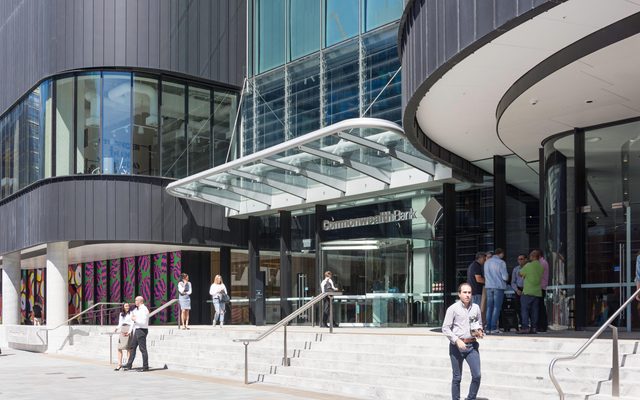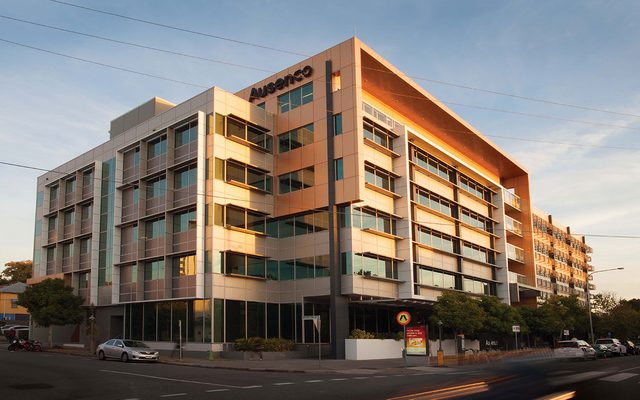This article is from the Australian Property Journal archive
LEASING activity in the Asia Pacific region has picked up and absorption is on track to reach their seven-year high of over 73 million sq ft this year, according to Cushman & Wakefield.

/* Style Definitions */
table.MsoNormalTable
{mso-style-name:”Table Normal”;
mso-tstyle-rowband-size:0;
mso-tstyle-colband-size:0;
mso-style-noshow:yes;
mso-style-priority:99;
mso-style-qformat:yes;
mso-style-parent:”;
mso-padding-alt:0cm 5.4pt 0cm 5.4pt;
mso-para-margin:0cm;
mso-para-margin-bottom:.0001pt;
mso-pagination:widow-orphan;
font-size:10.0pt;
font-family:”Times New Roman”,”serif”;
mso-fareast-language:EN-US;}
Cushman & Wakefield`s Asia Pacific managing director of research Sigrid Zialcita said sustained economic progress the region for continued improvement in leasing activity through next year, which will shift into higher gear in 2016.
“Notably, Tokyo’s office market continued to strengthen in the first half of the year with occupancy in new projects reaching over 90%,”
Zialcita said on average, rents might still rise moderately in core markets by about 1%, and remain stable in the majority of emerging markets through next year.
Only Tokyo, Hong Kong’s Greater Central, Bengaluru and Manila will see rents up in the mid-to-high single digits, driven by favourable demand and supply fundamentals.
The tech sector continued to grow its office footprint in the region, accounting for a third of the major leases done in the first half of the year, as compared to about a fifth in the same period last year. However, this continued trend of stable-to-increasing rental rates, and the increasing viability of non-core alternatives, will continue to trigger shifts in leasing patterns. There is a growing cadre of tenants that are gravitating to non-core A grade buildings and business parks, due to high rents and limited options in some core locations.
“This has also has much to do with the availability of options in a market. Governments remain cognisant that technological innovation is key towards sustaining a country’s competitive advantage which the development of the tech sector plays a crucial role. To this end, countries have actively planned for real estate solutions that cater to such companies, much like what Silicon Valley has done for today’s tech icons.
“Additionally, technology continues to redefine commerce and reduce the office footprint. Tech and other creative firms are generally indifferent to building quality as long as the buildings are well-located and the companies are able to design attractive and creative environments,” she added.
Zialcita said tech companies have been inclined towards centrally located offices in established office districts, driven by the need to attract and retain its workforce comprising millennials who are drawn towards urban core locations.
“However, in high cost markets, this practice might not make good business sense in the longer term especially as the region’s offices are ranked high in terms of occupancy costs; availabilities in these markets are also tight,” she continued.
Cushman & Wakefield Asia Pacific tenant advisory group managing director Jeremy Pearson said cost consideration invariably is a crucial part of the equation in any company’s real estate decision.
“If the lower cost option is a viable quality alternative, there is more bang for your buck and companies can be expected to respond to it,” he said.
In Singapore, for instance, over 300,000 sq ft has already been vacated by some new tech firms during the past year through the first quarter of 2015; these companies cite ample space options and lower rents in fringe locations, providing them flexibility for expansion and freeing up capital for other expenditures or recruitment. With global macroeconomic conditions seeing bouts of volatility, firms are also more cautious.
This has come in the form of business parks that promote clustering of like-minded companies or solutions that cater to the tech sector giants. Google’s expected move to the new development at Mapletree Business City(MBC) 2 allows the company an empty canvas to design its own workplace that would allow it to duplicate much of its famed campus offices in Singapore. Another tenant expected to be bound for MBC2 is Microsoft.
In doing so, these companies often ink longer leases. For example, Facebook’s six-year term in Hong Kong at One Island East @ Hong Kong East is double that of most leases inked in the region’s most expensive office market. The building is a well-connected prime building in Quarry Bay while MBC in Singapore is within city limits and offers a commanding view of the island’s southern waterfront.
Last year, Chinese e-commerce giant Alibaba purchased a 590,000 sq ft tower in the yet-to-be completed Greenland Centre Beijing for US$260 million to house its expanding operations. The building is situated in the capital’s Wangjing submarket, an emerging office submarket where rents are on average about 30% lower than its core business districts. The company also bought a vacant site in Shanghai’s suburban Hongqiao Hub, in close proximity to transportation links, reportedly to construct its headquarters in the nation’s financial capital.
Citibank, in Hong Kong, is also expected to move some of its operations to One Bay East, which it also purchased last year, while still maintaining a crucial presence in Greater Central at Citibank Plaza. However, in contrast, Japan Post Insurance will occupy most of Osaki Bright Tower in Tokyo, opting instead to streamline operations by integrating its offices that are scattered over three locations.
Zialcita said firms in the region are taking a multi-pronged, holistic approach towards assessing and implementing their real estate strategies. While some have opted for a straightforward move to cheaper options, others have been more meticulous and creative by splitting and shifting non-core functions.
“Workplace strategies are also now increasingly a core part of a firm’s real estate blueprint. In Tokyo, companies are moving to buildings with larger floor plates and higher efficiency to facilitate consolidation plans as well as opting to be located close to transportation links, such as the Shinkansen, as most of these companies could have facilities located outside of the capital.
“With gateway cities in the region expected to once again dominate the rankings for most expensive office locations, the reality is that there are no short cuts to managing occupancy costs,” Zialcita added.
Asia Pacific occupier services managing director Jason Whitcombe said in the networked economy, it is a winner-takes-all market and companies continually strive to either maintain that competitive edge or deliver the next disruptive innovation.
“Internet business models are still evolving and real estate strategies will similarly evolve with it; technology companies will continue to utilise workplace strategies that are conducive to these processes to gain that competitive advantage and also attract the best talent,” he added.
However, in other tech-dominated office markets that are in emerging economies, the more affordable rentals means tech companies will remain attracted to its IT hubs. This has been apparent with several large high-profile leases struck by e-commerce and technology companies in India’s major cities. Amazon inked one of the largest deals this year, leasing over 1.0 million sq ft at Bagmane Constellation Business Park, which comes on the heels of its rival Flipkart’s recent lease at Embassy Tech Village for 2.0 million sq ft. Both are located in Bengaluru’s Outer Ring Road, a key location for tech companies where rentals are in the upper range of the marketand with sustained double digit growth expected through 2016.
“Certainly, India’s office parks are built for different functions and Bengaluru, the country`s biggest office market, remains the hotspot for the IT and ITeS sector as global tech demand remains voracious,” Zialcita concluded.
Australian Property Journal



